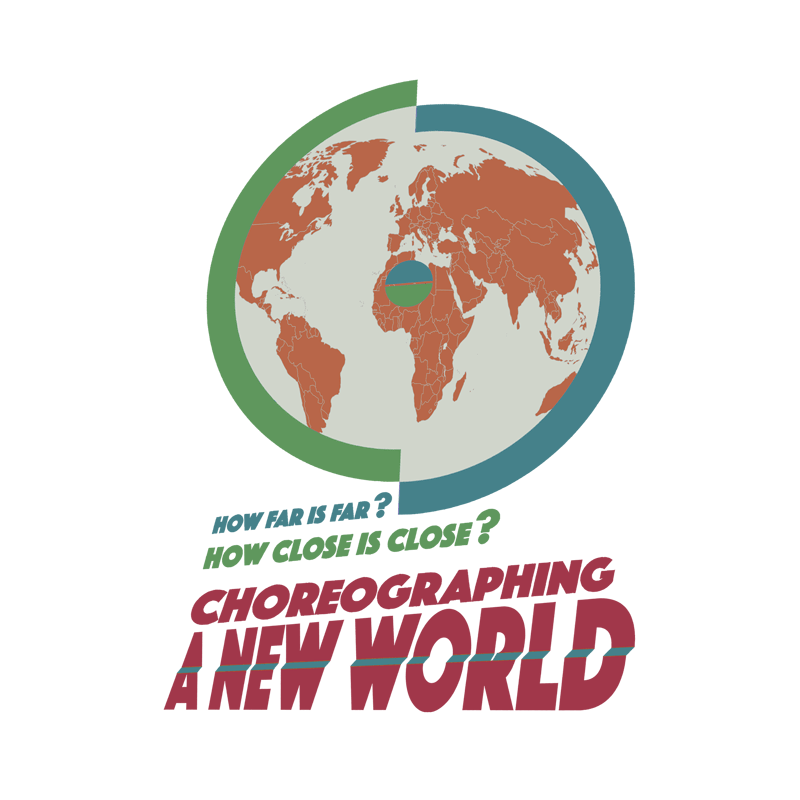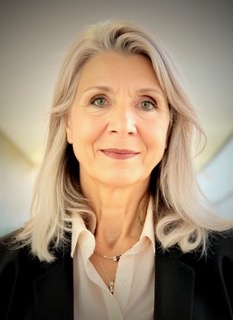4th EADMT Conference / How far is far? How close is close? Choreographing a new world / 23-25 September 2022

The European Association of Dance Movement Therapy (EADMT) and the German Association of Dance Therapy (BTD)
would like to welcome you to the 4th EADMT conference
“How far is far? How close is close? Choreographing a new world”.
We are most proud of this collaboration and we hope to present a program filled with inspiration and lots of possibilities for connection and exchange. The schedule mirrors the knowledge and expertise of DMT practitioners and researchers from around the world.
The first European DMT conference took place in Berlin in 1994 and it was a rich and fruitful moment that started the process of constitution of the EADMT.
We come back this year with the reality of 29 member countries as witnesses of a European DMT identity-rich and complex and in becoming.
We are living in times that are testing us and that have represented an unprecedented challenge: first the pandemic with the shared experience of isolation and distance, and then the war that has raised many uncertainties. We hope that these experiences can be transformed into a stimulus to discover new ways of communication and that we can be present in proximity and distance. This conference is a great opportunity to feel more united and supported across Europe and the world, to rediscover the value of deep connection and welcome the practice of DMT within the clinic setting and the social sphere.
We are grateful for the contributions from a variety of countries and the shared work of strengthening DMT in the world. Thank you to the keynote speakers, the presenters, the workshop leaders and all those who are sharing their knowledge and their work with us.
We are looking forward to meeting you in Potsdam!
Vincenzo Puxeddu (EADMT President) & Indra Isabelle Djimjadi (BTD president)

Dr. Marija Jakubauskienė is a public health expert, researcher and academic leader currently serving as the Minister of Health of the Republic of Lithuania. Dr. Jakubauskienė brings to the role more than two decades of experience in public health science, biomedical research, medical humanities and health policy development.
Dr. Jakubauskienė holds a PhD in Biomedical Sciences from Vilnius University, where she also earned advanced degrees in Business Administration and Entrepreneurship and Innovation Studies. She has held a number of senior academic positions, including Associate Professor and Director of the Institute of Health Sciences at Vilnius University’s Faculty of Medicine. Her leadership has extended to international engagement as Vice-Dean for International Affairs and Programmes and as a recognized lecturer, awarded Best Lecturer of the Faculty in 2023. Internationally, Dr. Jakubauskienė has played an active role in advancing public mental health through her contributions to the European Public Health Association (EUDHA), where she has served as President of the Public Mental Health Section and as a member of the International Scientific Committee. Her research interests included population health science, mental health, health system, policy research and medical humanities.
Since 2015 from the beginning of the Art Therapy Master study programme at Vilnius University Dr Jakubauskiene has been coordinating and teaching biopsychosocial health, clinical practice and ethics subject as well as supervising research projects of master students in Art Therapy. Dr Jakubauskiene has continuously contributed to the development of synergies in arts, culture and health ecosystem in Lithuania.
Keynote lecture: The Perspective of Arts Therapies within Integrated Care in Lithuania
Dance Movement Therapy is a pivotal element of art therapy practice and can play a significant role in supporting health and wellbeing of individuals in the aging and multimorbid society. Effectively addressing complex health needs remains a challenge for healthcare systems. Integrated care model aims to respond to these growing complex health and social needs in our societies. Expanding integrated care model by the approaches and tools of arts therapies may contribute to better health and wellbeing of patients and communities.
In Lithuania, arts therapies—including art, music, drama, and dance movement therapy—are formally integrated into the national healthcare system, supported by accredited master’s programs through collaboration between medical and arts institutions. These therapies are applied in diverse clinical and community contexts to support individuals with mental health conditions, chronic illnesses, trauma, and social exclusion.

Dr. Rosemarie Samaritter is a registered dance movement therapist and supervisor and an independent researcher. With more than 40 years of clinical experience she has built specific expertise in the application of DMT in complex trauma, personality disorders, neurodiversity and disorders with impaired sense of self.
As one of the pioneers of DMT in the Netherlands, she was involved in the development of the first BA training in dance therapy, now situated at Zuyd
University of Applied Sciences and the initiation of the dance therapy chapter of the Dutch Association of Creative Therapies, the predecessor of the current Dutch Association of Dance Movement Therapists (NVDAT). As an associate professor at Codarts University of the Arts Rotterdam, Rosemarie was involved in the Master ofArts’ DMT curriculum and conducted DMT related research. Currently, her specific research interest is in documenting DMT interventions from first-hand knowledge of DMT practitioners and develop systematic intervention descriptions. For severalyears, Rosemarie participated in the EADMT research chapter. She teaches, presents and publishes regularly on DMT theory, methods and research in the Netherlands and abroad.
Choreographies of Change, independent academic space for DMT:
http://www.choreographiesofchange.org
ORCID: https://orcid.org/0000-0001-7717-5712
Google scholar: https://scholar.google.com/citations?user=mljXpAcAAAAJ&hl=en
Keynote lecture: 15 years into European Association of Dance Movement Therapy: from co-creating a professional identity towards unfolding professional landscapes
With the upcoming conference, we will celebrate the 15th anniversary of the European Association for Dance Movement Therapy (EADMT), at a time when Dance Movement Therapy (DMT) is advancing in Europe and globally.
EADMT’s 5th conference revolves around three central themes: VISIBILITY – VITALITY – VISION.
With these themes and a range of related questions, EADMT has opened a broad horizon for participants to reflect on our profession and the various challenges for DMT in the professional field. Contributions to the conference reflect multiple perspectives informed by personal practices, national and international developments, and current societal, economic, and political contexts.
The keynote address will examine the integral role of the EADMT in co-creating a professional identity from various national traditions. The discussion will also explore how the current DMT landscape is relevant to contemporary questions and future directions for the European DMT community.
Over the past 15 years, the EADMT, in collaboration with numerous dedicated colleagues, has evolved into a systemic container for the European DMT community, where members find each other to advance the profession. However, several challenges persist, including:
– enhancing the professional profile of DMT
– articulating and showcasing DMT’s specific contributions to the mental health field
– adapting to changing societal contexts and challenges
– building budgets for professional development and research
The keynote address will explore how our artistic roots, clinical identities, and academic and philosophical foundations can enhance and vitalise our vision and visibility. We will discuss models from organisational aesthetics (Creed et al., 2020) that incorporate concepts such as resonance (Rosa, 2016) and aesthetic unfolding (Barrett, 2000). These models may be well-suited to develop comprehensive frameworks that promote sustainable structures for the European DMT community, helping us stabilise and expand our position within the Creative Arts Therapies (CATs) and in the broader context of health and well-being.
|
CONFERENCE ORGANISATION |
|
|
EADMT Board |
BTD Officials |
| Vincenzo Puxeddu – President
Imke Fiedler – Secretary General Izabel Guzek – Treasurer Elli Kita – Communication & PR |
Indra Djimjadi – President
Petra Schrader – Office Manager Margot Schwarz – IT Manager |
|
EADMT Conference Group |
BTD Berlin Conference Group |
| Rosa Maria Rodriguez-Jimenez – Coordinator
Julia Morozova Richard Coaten Marcia Plevin Nina Kanevskaia Amanda Kougioufa |
Nicole Hartmann – Coordinator
Elen Vidovic – Finances Massumeh Rasch – Booking Imke Fiedler Christel Büche Anne Labbé Ilona Mazur Sarah Vella |
|
Reviewers |
|
| Nina Alkalai
Susanne Bender Irina Biryukova Marja Cantell Isabel Figueira Terje Kaldur Indra Majore-Dusele Sabine Koch Elena Mignosi Heidrun Panhofer Marcia Plevin Rose-Maria Rodriguez-Jiménez Rosemarie Samaritter Sonja Seng Alison Singer Suzi Tortora |
Maria Artemi
Penny Best Iris Bräuninger Richard Coaten Maria-Elena Garcia Nina Kanevskaya Jochen Kleres Julia Morozova Antonella Monteleone Helen Payne Vincenzo Puxeddu Petra Rostock Susan Scarth Tal Shafir Natasa Smyrli Hilda Wengrower |
|
Scientific criteria for reviewers: Rosa María Rodríguez-Jiménez Rosemarie Samaritter |
|
|
Responsible for final program content Julia Morozova Rosa María Rodríguez-Jiménez
|
|
| Edition of final program, location and facilities at Postdam:
BTD Berlin Conference group |
|
|
Communication Elli Kita (board, web page), Imke Fiedler (board), Vincenzo Puxeddu (board), Communication working group: Martina Vavrova, Andrea Tziorta, Gabrielė Dylertaitė (fb, Linked-In) |
|
| Payments and receipts:
Iza Guzek (board) and Elen Vidovic |
|
Introduction
In a rapidly changing world, we are compelled to reconsider the importance of closeness and farness as professionals whose practice uses embodied space, time and relationship to gravity as key elements. Humanity seems to be accelerating rapidly into an increasingly complex and predominantly digitized era with new means of communicating via social media, and accelerated technological advancements being rapidly incorporated into daily life. These developments are at the same time being mirrored by people feeling increasingly isolated. Pandemics are causing isolation, restrictions in touch, social distancing and distant socializing. All of this creates new more stressful and predominantly disembodied environments in which we live.
Bridging the gap between the real and virtual world or coping with the consequences of that growing gap is a challenge for our profession as dance movement therapists like never before. This ‘bridging’ process must include ways of transforming perceived obstacles or threats into new approaches, which fit these challenging times, providing inspiration and relief of suffering; while allowing all in our care not just to cope but also to flourish in these conditions.
We work with our clients sharing time and space in a therapeutic relationship that helps them to feel, to let go and express deep parts of themselves. Technology accelerates time and opens up new spaces for us all, where we take advantage of our creativity and flexibility in order to keep alive, as far as possible, the special nature of the embodied encounter in this new world. We renegotiate the shared space, the ways we connect, the sensorial channels we use. We open up to new possibilities, while attending to the profoundly ethical and respectful ways we meet, address and treat increasingly complex expressions of mental ill-health.
This exciting conference aims to address the themes described above and we call here for proposals reflecting a wide range of high-quality embodied, creative and neuroscientific approaches and research that help to ‘bridge these gaps’, contributing to choreographing a new world by way of the work of the contemporary dance movement therapist.
Conference sub themes are:
The Conference Organizing Committee cordially invites you to submit your proposal on the conference themes
Formats of proposals:
The criteria for selection will be:
The selection committee will also take into consideration:
Reduced Fee for presenters: 290 euros